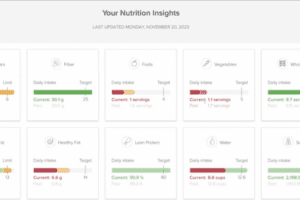If you had asked me about the benefits of computer vision AI in healthcare settings, I would not have known what you were talking about. Since then, though, I’ve learned about a company that is using this technology in interesting ways to forward the fight against COVID-19.
The vendor, Inspiren, has created a solution that uses computer vision to track and report on what happens at the patient’s bedside. Computer vision is a field of AI in which systems are trained to identify and classify objects found in digital images from cameras and videos by leveraging deep learning models.
Inspiren’s iN hybrid sensing platform combines computer vision capabilities with environmental sensing and IoT connectivity to analyze the physician and digital environment in which care takes place.
At first, the platform was deployed in care settings to help avoid preventable harms such as pressure ulcers and falls. (It also includes a gamification element designed to acknowledge front-line clinical staff, a feature which may in part arise from the experiences of the company’s leadership. Two of the company’s leaders worked as nurses before Inspiren was launched.)
More recently, as COVID-19 has ravished the U.S., the nurses behind the company have been working in hospitals in New York City and New Jersey to better understand what front-line workers need now. The company has since shifted all of its development efforts to address pandemic-related concerns.
In its latest incarnation, Inspiren offers automated contact tracing by tracking comings and goings at the patient bedside. In the event a patient is a confirmed source of the virus, the platform lets organizations know who entered the space, how long the visit in question lasted and how close the visitor was to the source patient. The vendor has also created algorithms alerting staff in real-time if PPE is not worn or secured properly, which becomes particularly important to know when tracking possible infection vectors.
In addition, in response to what has become a need in hospital-based COVID-19 treatment, the vendor has developed a remote monitoring solution allowing virtual visits with patients in isolation rooms through a live de-identified video and audio feed.
To me, the evolution of Inspiren’s technology brings a couple of important points to the fore.
For one, it’s a reminder that if we’re lucky, the energy we pour into adapting Health IT to COVID may end up offering lasting benefits. While some innovations (such as contact tracing) may be relevant almost exclusively in pandemic conditions, we may see future payoffs from stretching the other capabilities of AI solutions like computer vision. In some cases, we’ll see lasting returns from advances that might have been years in the making otherwise.
Another important lesson here is that it’s wise to pay attention to the insights front-line staffers like nurses bring to the table. Much of health IT development is focused on solving problems doctors face, and while this makes some degree of sense, we should probably do more to support other members of the care team. I’d be interested to see if other Health IT vendors respond to the extreme pressures nurses, in particular, have faced in battling the virus.













